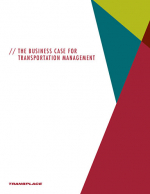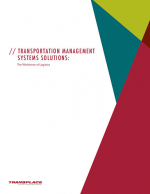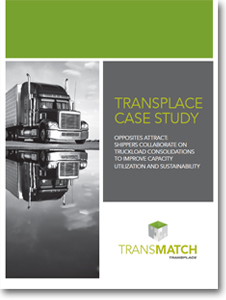Shippers Collaborate on Truckload Consolidations to Improve Capacity Utilization & Sustainability
What happens when a logistics leader helps shippers work together to redefine “the perfect load?” Read about the immediate and substantial benefits that Transplace helped Dal-Tile and its co-load partners realize by executing a plan that made an impact on capacity utilization, sustainability, and cost.
Summary
Collaboration is often talked about, yet is challenging to accomplish.
The right partners, products, and business cultures are key to collaboration coming to life.
Shippers with dense freight reach legal weight limits but can leave a significant amount of cubic capacity unexploited in the trailer, container, or boxcar.
Likewise, shippers with lower density freight fill the cubic capacity but leave weight capacity unutilized. By combining its high-density freight with other shippers’ low-density freight, Dal-Tile is able to simultaneously fill both weight and cube volume, thereby optimizing the utilization of transportation capacity.
This business case by Dal-Tile, Transplace, Whirlpool, and others, benefited all of the shipping partners by reducing their net logistics cost and combined carbon footprint.
Innovation Statement
In an effort to improve capacity utilization, an international co-load program was developed that combined shipments from companies in different industries - an endeavor that Mexican Customs officials thought was too ambitious.
Refusing to be confined by industry norms, Dal-Tile identified and partnered with like-minded businesses to bring the shipments much closer to absolute capacity optimization, providing financial and environmental benefits without sacrificing service.
Impact Statement
Despite the diversity of the companies involved in terms of products and processes, the value this program brings is universal to all parties. From fuel and resource savings to carbon footprint reduction, the benefits are immediate and substantial.
Both Dal-Tile and its co-load partners have seen a consistent 20–30% net reduction in process and resource costs as a result of the program.
The shipments of Dal-Tile and Whirlpool proved to be perfect complements:
- Dal-Tile’s intermodal and over-the-road (OTR) shipments - traveling 2,000 miles at 20% cubic capacity utilization
- Whirlpool’s boxcar shipments - at 20% of their weight capacity.
- The combined boxcar shipment yields 70–80% of the capacity each shipper received in private service, as well as an environmentally friendly mode shift.
What’s Related




Favorites





